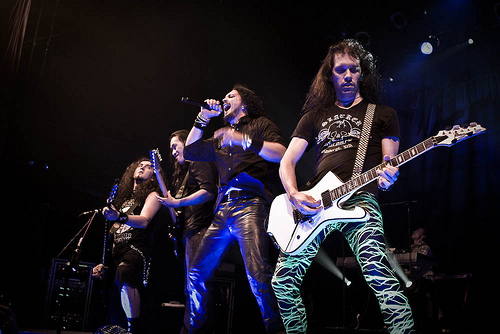Every White Willow album is a gem, and Future Hopes might be the most precious of them all. Befitting the fact that they’ve entered their third decade in the progressive rock scene, White Willow’s newest offering is something special, both musically and visually (yes, that’s a Roger Dean painting on the cover).
Of the young Scandinavian groups that re-energized progressive rock in the mid-nineties—a wave that included bands like Landberk and Anglagard—Norway’s White Willow has been the most active. Seven albums over 20-plus years isn’t extraordinarily prolific, but for a part-time, studio-bound project in a niche scene like progressive rock, it’s not too bad.
What’s most important is that White Willow, whose ever-shifting membership is recruited and directed by head songwriter and producer Jacob Holm-Lupo, has never stopped refining its music. After earning my devotion with the furtive strains of 1995’s Ignis Fatuus, the band’s sound grew more confident, developing via albums like Storm Season and Terminal Twilight to arrive at the ominous melodic brew that simmers throughout Future Hopes.
The production on Future Hopes is dazzling and eventful, with an emphasis on keyboard textures from the latter half of the seventies—think U.K. or Genesis on Wind and Wuthering. Holm-Lupo and co. had some classic synths available in the studio, and they made full use of them for the extended song intros and other instrumental passages sprinkled throughout the album.
Beyond just the sounds, the songs are where the magic of Future Hopes lies. The opening title track packs many surprises into an anthemic four and a half minutes, whereas “A Scarred View” is the kind of deceptive epic that makes 18 minutes breeze right by.
New vocalist Venke Knutson’s voice fits right into the White Willow sound, which has always used the dynamic between sweetness and foreboding to great effect. As a listener, you can get lulled into a false sense of comfort by the music’s earnest beauty, and realize only later that the lyrics concern societal collapse or some other dire scenario. Drummer Mattias Olsson never met a beat that he couldn’t turn upside down with his inventive playing. He never plays the obvious thing, a trait shared by guest guitarist Hedvig Mollestad, whose solos avoid conventional rock shredding in favour of sly leaps and tangents that cement the album’s at-times uneasy atmosphere. Inviting her to play on the album was a genius move.
The first five songs—a tight 40 minutes’ worth—are perfectly sequenced for the vinyl release, while the CD features two snazzy extra tracks, namely their sextastic, Moroderesque cover of Scorpions’ “Animal Magnetism” and the instrumental “Damnation Valley.” Whatever the format, know that this is a stellar release, and a milestone in White Willow’s history.
(The Laser’s Edge, 2017)


